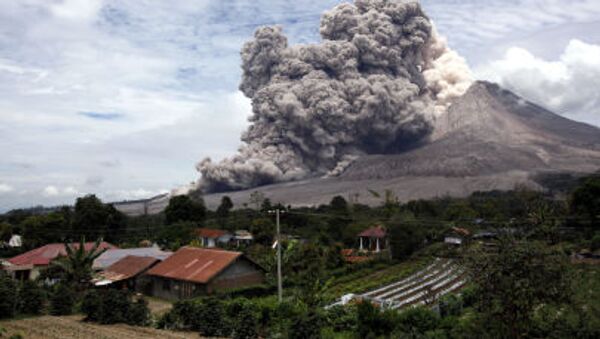The area has been on high alert since Mount Sinabung first erupted in June 2015, killing six people and forcing the evacuation of tens of thousands of local residents.
Sutopo Purwo Nugroho, a spokesman from Indonesia's National Disaster Management Agency, tweeted Wednesday that no casualties were reported following the latest eruption because those within the red zone around the volcano had already been evacuated.
However, the latest cataclysm has made the island even more wary of the volatile formation.
"Mount Sinabung's continuous eruptions have caused the exclusion zone to expand," Sutopo wrote. "Residents need to stay alert and listen to the government's recommendations. We cannot predict when Mount Sinabung will stop erupting. Mount Sinabung's volcanic and seismic parameters are still high, therefore future eruptions are still likely," he added.
— Ms Milky the Clown 1 (@msmilkytheclown) December 27, 2017
The evacuation zone around the volcano has increased to a four-mile radius.
"Residents who live near the rivers upstream from Sinabung must be watchful for lava," Sutopo also warned.
Earlier this month, the eruption of Mount Agung on Bali resulted in the evacuation of residents around the volcano and disrupted the flights of thousands of tourists on the island.
— Nuice Media (@nuicemedia) December 27, 2017
Indonesia straddles the Pacific Ring of Fire, an active geological area in the basin of the Pacific Ocean where earthquakes and volcanic eruptions are frequent. It is associated with 90 percent of the world's seismic activity, according to the US Geological Survey.

